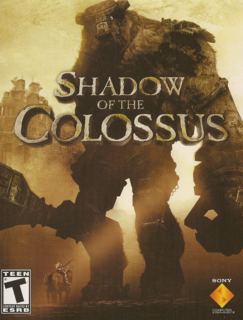Less is More
Scaling the Colossi is an adventure in it of itself, but figuring out how to exploit it and actually attack the being is as satisfying as actually killing the being. Yet that statement is not entirely accurate: killing the colossi proves challenging not for the simple action of thrusting a sword, but because the sheer beauty of the beast, the fulfillment of actually mounting the beast, and the ambiguity of the plot causes internal conflict. Not only do you not want this specific challenge to end, but the lack of any real knowledge as to what killing such unassuming beings will accomplish creates a strangely sympathetic outlook towards your “enemy,” even though their goal is essentially the same as yours. It may not be evident during battle, but once the colossus finally succumbs and the hums and strings of the music kick in, it is challenging to not become despondent over what had just transpired…and what was overall result.
And this same sequence happens fifteen more times and never loses its resonance.
The plot of the game is just as ambiguous. The main setup is that a young male wants to bring a woman back to life, and the only way it can possibly happen is to murder these Colossi as a form of sacrifice to an otherworldly being, even at the risk of the protagonists well being. Little else is revealed throughout the game (partially due to the lack of any dialogue for about 85% of the game); even the ending contains plenty of ambiguous moments. But even though little is clarified, there is just enough context to validate going through your quest yet not enough to really care; it’s sort of an odd dichotomy of caring too much and too little at the same time about your own wants: maybe you just care enough to see what these beings are; maybe you care to find out more about the plot; maybe you just care for the journey of the land. No matter what, there’s one main word that rings true: “care.” Even if you find the game to have the “faults” that most non-gamers might have, these aspects aren’t the focus or the draw: since you care about what is happening for whatever your reason may be, you don’t care to worry about hindsight. The direction, style, and nuances of the game do a great service helping you gained attached to the game, even with the lack of dialoge. As you play on, you start to notice aspects that aren’t mentioned throughout the game. For example, as you progress through the game, the main protagonist starts to look sicklier, as does your horse (Argo.) Once the story starts coming to a close, events occur that prove to be as moving as moments in any other game…or likely medium…you’ve ever experienced. Then once the final boss is defeated, a string of events occur that are so memorable and powerful (helped especially by the ability to play these final sequences) that even though you knew so little throughout, you knew everything you needed to for the ending to come full circle. In an industry that has not received its due for crafting emotional connectivity, Shadow of the Colossus portrays solitude, desperation, and anguish in a matter that transcends some of the best entertainment available.
* This editorial is a part of a column originally written for TeamGameOnline.com, in which I am a main contributor. The piece is a collection of my five favorite PS2 games of all-time; preceeding this game was Guitar Hero and SSX: Tricky] *

